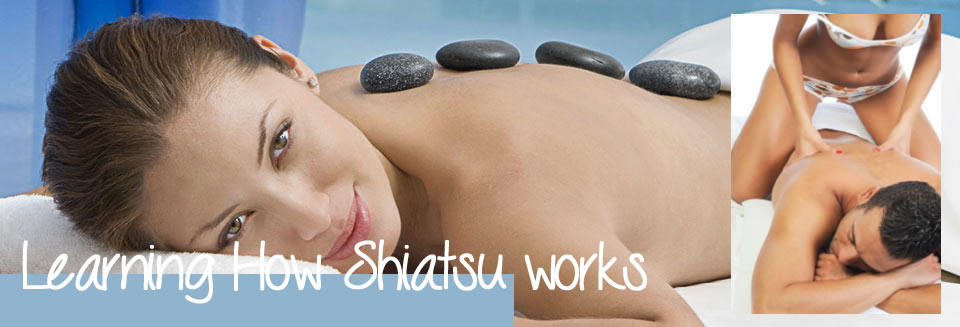yoga & health magazine
Learning How Shiatsu works
Bring in the new year - Yoga & health magazine's Introduction to shiatsu contains very important pointers that will help you learn the art of Shiatsu effectively; it also presents some important 'do's and don'ts' to consider when giving a Shiatsu treatment.
See commonly asked questions about Yoga
Therefore it is strongly recommended that you read it carefully before proceeding to Part One.
- Yin and Yang
- THE ABDOMEN TREATMENT
- Leg Pressure Points
- Preparing for a Shiatsu Session
- The Five Elements
- Shoulder pressure points
- THE STEP-BY-STEP SEQUENCE
- RESOURCES
- The origins of Shiatsu
- Techniques
- How to find the points
- POINTS TO REMEMBER
- How much pressure to use
- SELF-SHIATSU
- Choosing a school or practitioner
- SELF-TREATMENT
- Shoulders Treatment
- Vital organs
- Energy channels
- TREATING THE INDIVIDUAL
- DEVELOPING YOUR TECHNIQUE
- Energy in the hands
- Hara and breathing
- SELF-DEVELOPMENT EXERCISES
- Back of body treatment
- Front of leg pressure points
- Toe Treatment
- Tsubos
- Kyo and Jitsu
- Increasing your sensitivity
- Governing Vessel
- Forehead Massage

SELF-TREATMENT
One of the great advantages of Shiatsu is that you can use it for your own benefit as readily as you can to help other people. In fact, by treating yourself you will learn a great deal that will enhance your technique; you can experiment with locating pressure points more precisely, and you can discover what they feel like when treated, and how much pressure is appropriate for each one. Of course, when treating yourself you cannot reach all the points, especially those on the back, or apply the overall stretches or rotations in quite the same way. However, you can easily adapt the palming and thumbing techniques for the limbs and the front of the body. This means that you can carry out a comprehensive self-treatment that includes representative sections of all the major Ki channels, covering all the main body organs.
This part of the book does not repeat the whole sequence of techniques in Part One for self-treatment; rather it gives guidelines and examples of adaptation, together with some additional classical routines that have evolved specifically for one-person Shiatsu. The material is arranged in the order that best suits a complete self-treatment: a series of overall stretches to release tension, promote overall Ki flow and prepare for more specific work, first; a quick self-treatment sequence for the channels of the whole body, which can also serve as a framework for more detailed portions of self-treatment, next; and lastly, an example of detailed adaptation of a conventional Shiatsu routine for self-treatment, which also forms a useful finishing sequence, on the face and head. Naturally, any part of this overall plan can also be used on its own.
Face Treatment
Prices and Tuition
£50 for "First Session" Pilates or Pilates/Yoga or Yoga session, 1 1/2 -2 hours (where a consultation is involved). The first Pilates only or mixed Pilates/Yoga session is £50 for 1 1/2 - 2 hours. £30 for 1 hour £45 for 1 1/2 hours (Minimum rate is £45 for 1 1/2 - 2 hours unless it's a regular £30 1 hour session. ) £60 for 2 hours Other options are available, contact us if for other options. One-to-one rate/small group rates (2-4 clients, rate is the total payment, irrespective of number of participants.) Price reductions are negotiable for regular sessions.
